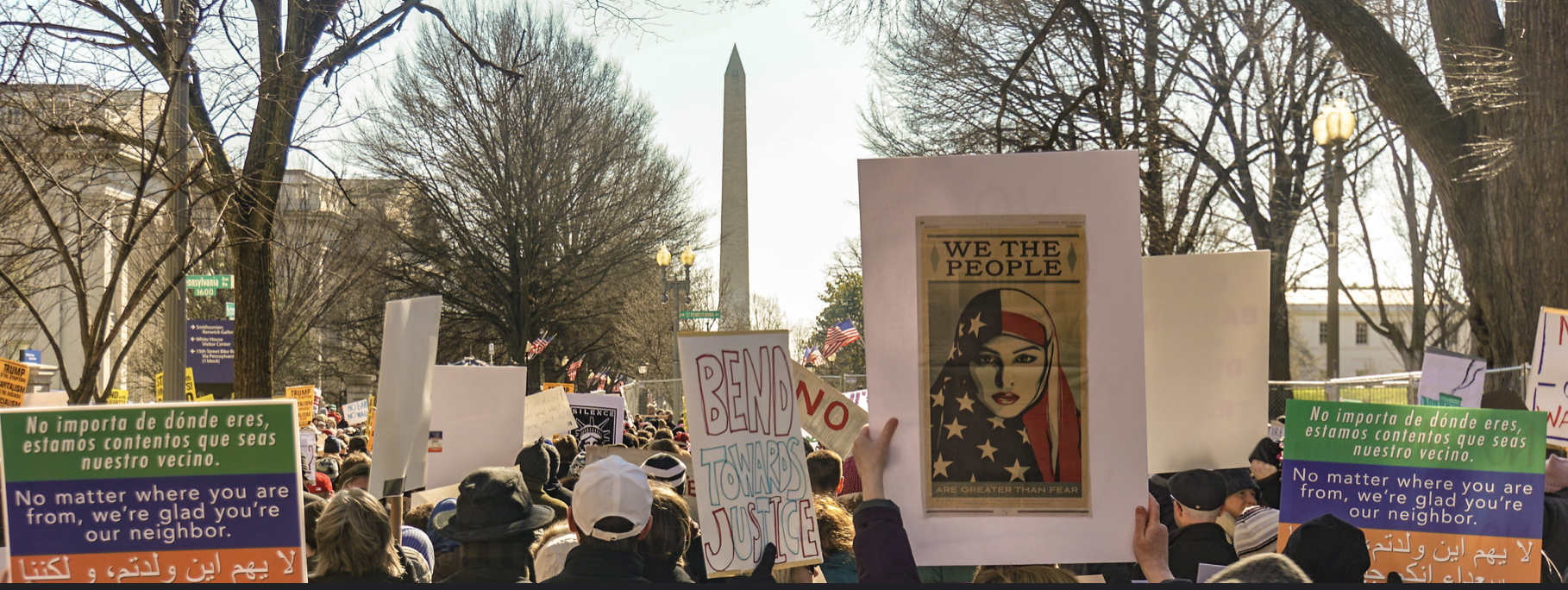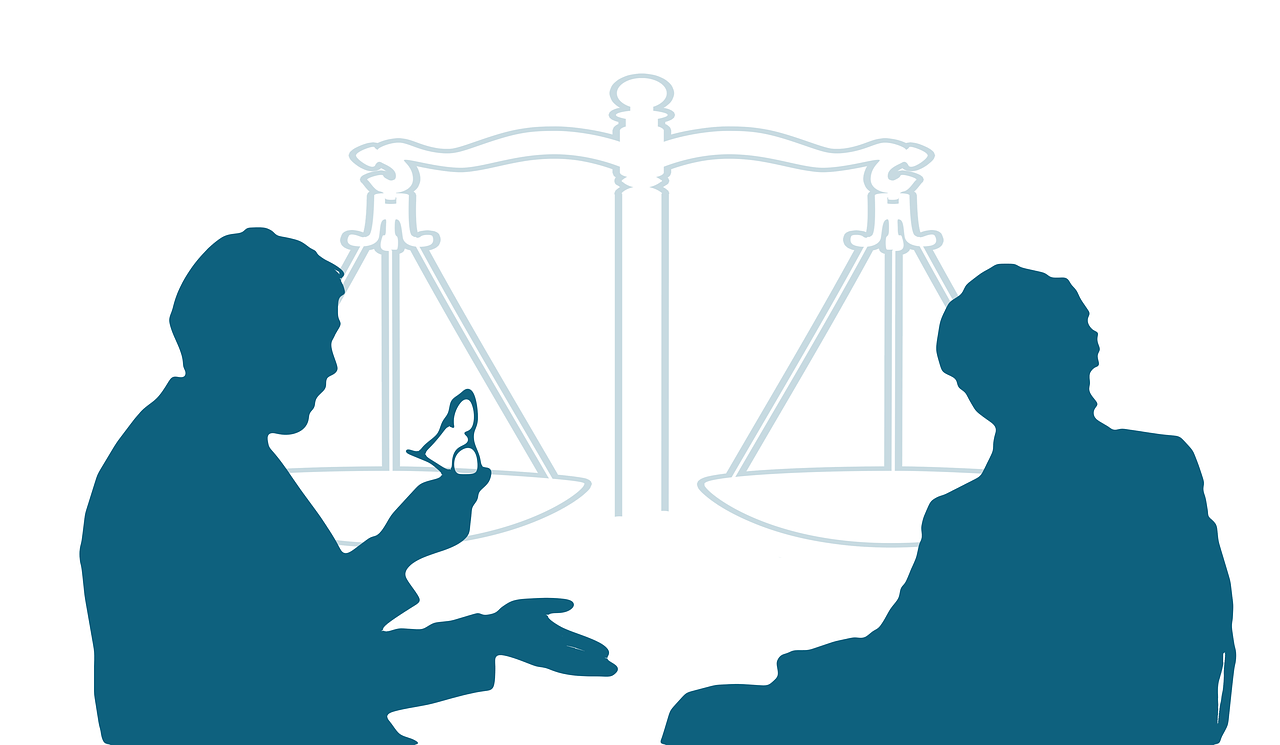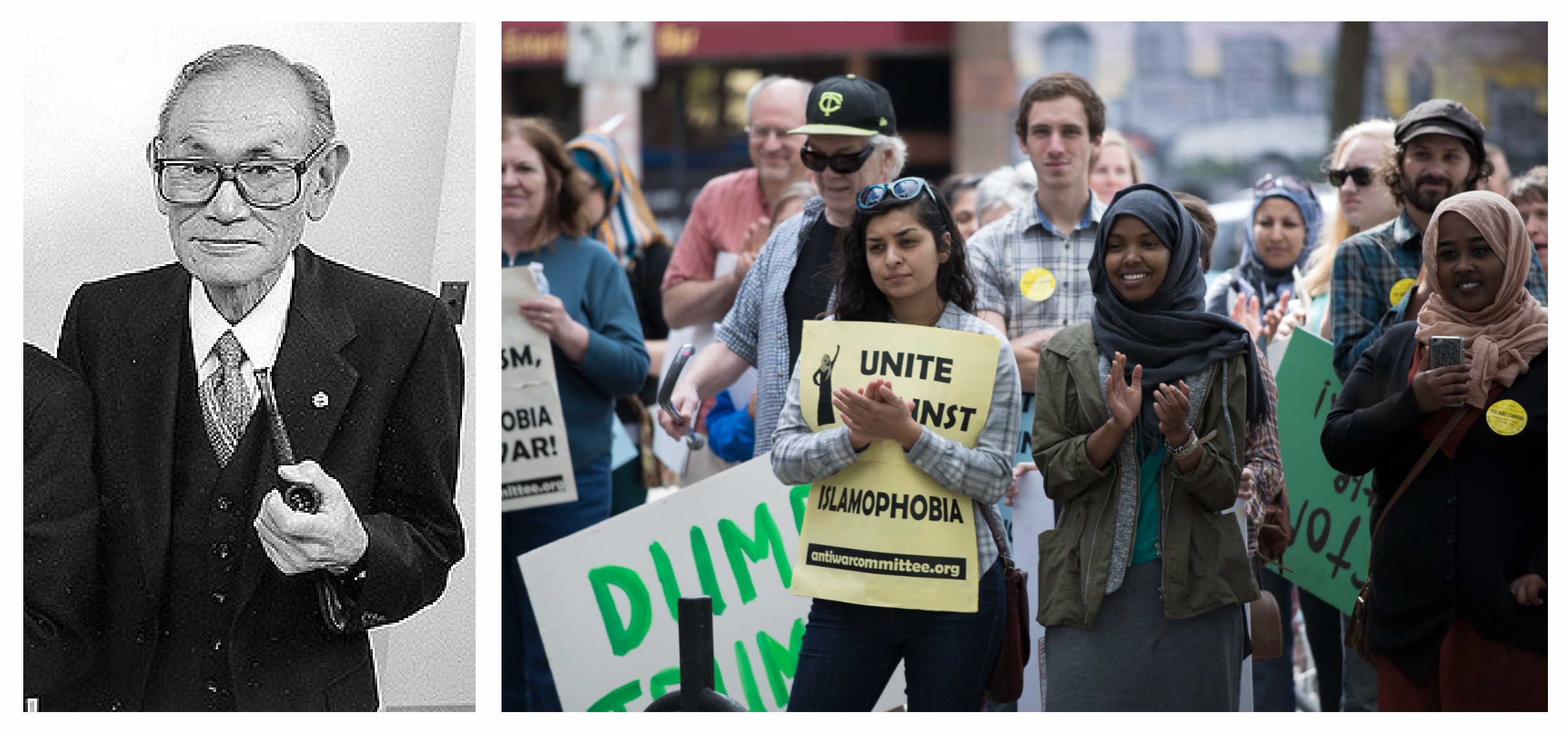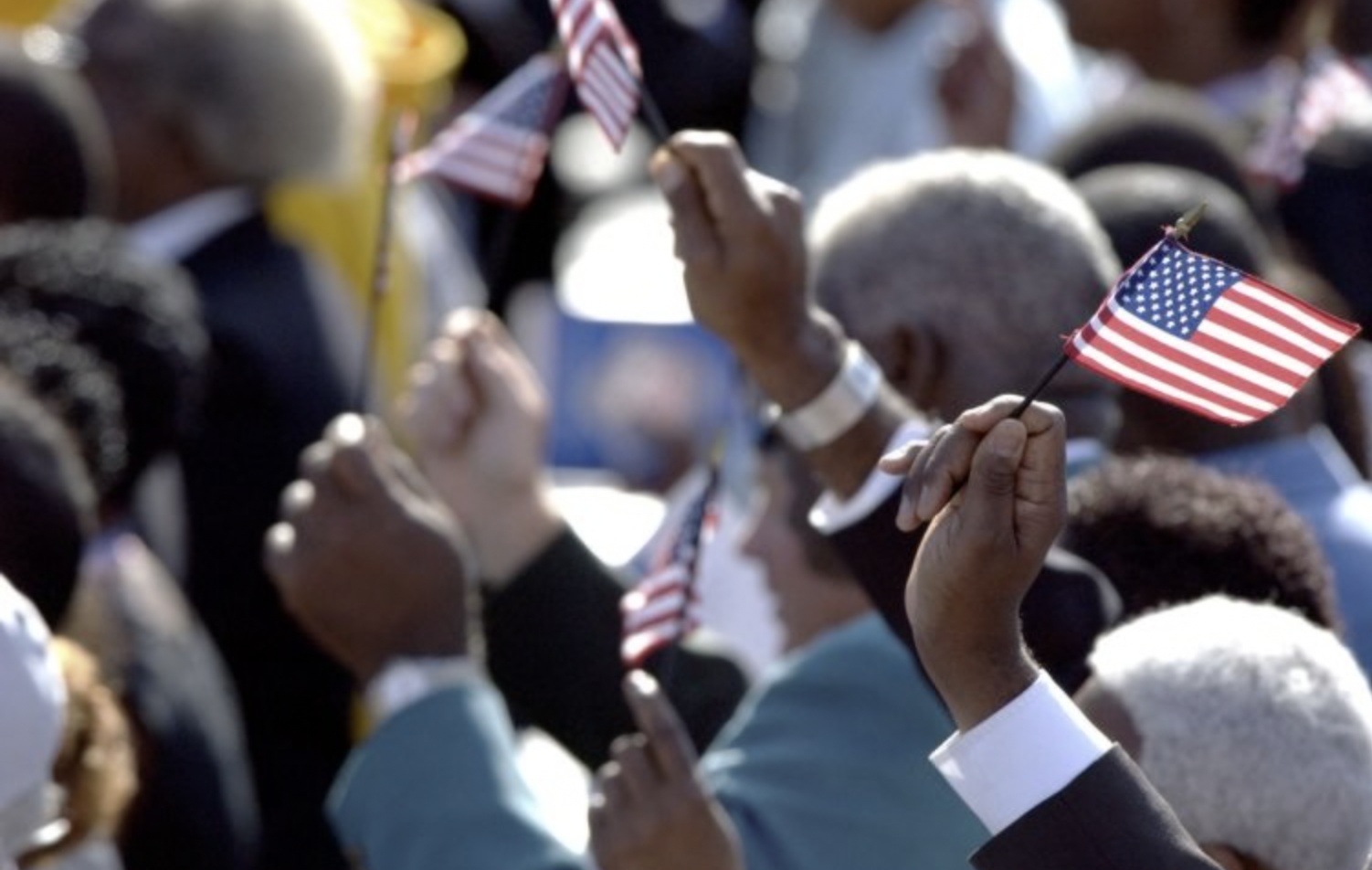Grade: 7-10Subject:
U.S. History, Social Studies
Number of Lessons/Activities: 4
On September 11, 2001, the extremist group Al-Qaeda attacked the United States by hijacking four airplanes that crashed into targeted buildings, killing and injuring thousands of people. Many South Asian, Arab, Muslim, and Middle Eastern Americans were scapegoated for these attacks, questioning their citizenship and loyalty to the U.S. for their “un-Americanness.” In this lesson, students will use debate to analyze how the government and the public perceived many South Asian, Arab, Muslim, and Middle Eastern Americans post-9/11. They will also recognize the effects of Islamophobia and its harm to U.S. citizens.
Why didn’t the benefits and protections of U.S. citizenship prevent the racial profiling and surveillance that South Asian, Arab, Muslim, and Middle Eastern Americans experienced post-9/11?
Students will:
- Use debate as a way to analyze the September 11, 2001 attacks and its impact – both in terms of the government’s response and public’s perception – to recognize the lasting impact of Islamophobia and how it harms U.S. citizens.
Citizenship and Islamophobia After 9/11 Essay:
Background:
On the morning of September 11, 2001, nineteen militants associated with the extremist group
Al-Qaeda hijacked four airplanes and carried out suicide attacks in the United States. Two planes were flown into the twin towers of the World Trade Center in New York City, a third plane hit the Pentagon in Arlington, Virginia outside Washington, D.C., and a fourth plane crashed in a field in Shanksville, Pennsylvania. A total of 2,996 people were killed during the attacks and another 10,000 were injured. The events of 9/11 reshaped the global response to
terrorism and raised new questions about security, privacy, and the treatment of prisoners. It also impacted U.S. immigration policies, led the U.S. into its longest war operations overseas, and caused a surge in discrimination,
racial profiling, and
hate crimes domestically.
Essay:
On September 11, 2001 (referred to as 9/11), the United States was attacked through the use of hijacked airplanes to strike designated targets, including the World Trade Center in New York City. These attacks were coordinated by Al-Qaeda, an Islamic terrorist group. While the group recruited from a number of countries and regions, the terrorists in this attack, including their leader Osama Bin Laden, were from Saudi Arabia.
Shortly after the 9/11 attacks, many South Asian, Arab,
Muslim, and Middle Eastern Americans reported racial profiling, hate crimes, and other discriminatory acts stemming from fears generated by the attacks because they were
scapegoated for 9/11.
The citizenship and loyalty of Muslims and South Asian Americans in the United States was questioned. According to comedian and activist Hari Kondabolu, South Asian Americans were “victimized twice” in the wake of the attacks. They too feared terrorism like their fellow Americans, but the country they lived in and loved hated them because of the attacks.
Many Americans began to view South Asian Americans as "un-American" because of their skin color, ethnic clothing, language, religion, and other visible and invisible markers of cultural and ancestral identity. The prevailing ideology was: If you weren't white, or more specifically, if you looked like one of the terrorists who attacked the U.S., you were likely a terrorist, a terrorist sympathizer, or simply not American. These acts of prejudice and hostility against anyone who appeared to be Muslim came to be referred to as
Islamophobia.
Dark-skinned South Asian Americans who wore a
turban, spoke other languages besides English in public, identified as Muslim, frequented
mosques and
gurdwaras, and/or worked in gas stations and other small businesses were often the targets of retaliation for 9/11. On September 15, 2001, Balbir Singh Sodhi, a Sikh American, was killed in the first 9/11-related hate crime at a gas station he owned in Mesa, Arizona by a white airplane mechanic who reportedly told friends he was going to “shoot some towel-heads.” According to a report by Asian Americans Advancing Justice, over 500 hate crimes were reported during this period.
The 9/11 attacks and subsequent irrational fear towards immigrants had severe implications for American security and immigration policies. In October 2001, Congress under the Bush Administration passed the USA PATRIOT Act to stop and punish terrorist acts in the United States and around the world, and allowed for the legal
surveillance of certain communities. The DREAM (Development, Relief, and Education for Alien Minors) Act, which would have provided a pathway to citizenship for
undocumented immigrants who arrived in the country as children, failed to pass in Congress. The government instead concentrated its efforts toward
deportations and surveillance.
One example of the surveillance that was widespread post-9/11 was the National Security Entry-Exit Registration System (NSEERS) implemented in June 2002 to screen foreign visitors who might pose a risk to national security. It required male noncitizens, sixteen and older, from twenty-five predesignated countries – all but one being Muslim-majority – to go through stringent registration requirements with the Department of Homeland Security (DHS), including fingerprinting, reporting for questioning with immigration officials, screening on arrival, tracking of residence and movement, and more. Those who failed to comply with the requirements faced several criminal and immigration penalties, including deportation and being barred from receiving future visas or gaining permanent residency. According to DHS, between September 2002 and September 2003 (the length of NSEERS's shorter, special registration component), 83,519 individuals participated in special registration interviews nationwide. As a result of these interviews, 13,799 individuals were placed in removal proceedings for violations of their immigration status, and not for ties to terrorism, the supposed focus of the program.
Post-9/11 programs and surveillance – which included Muslim informants for the FBI or local police departments spying on communities in mosques, community organizations, and other community spaces – were dedicated to collecting information about U.S. citizens that would illuminate any suspicious activity or potentially reveal domestic terrorist plots. It is difficult to calculate how many people were impacted by these programs, as they were often kept secret, but being surveilled by the government has left a generation of Muslim Americans with feelings of distrust and fear. As recently as 2017, the Trump Administration attempted to administer a "Muslim ban" to deny the entry of individuals from a variety of predominantly Muslim countries – most of which were on the NSEERS list – to the United States.
To highlight their patriotism, some South Asians and Muslims would hang the American flag outside their homes or businesses, stop wearing turbans or
hijabs, stop speaking their native language in public, or stop visiting houses of worship so often. Some non-Muslim South Asians also distanced themselves from Muslims, dividing the South Asian American community. In essence, some South Asian Americans felt they had to make extreme efforts to assimilate into white American culture by willingly risking the loss of their own cultural, ancestral, hybrid identity or, at the very least, risk losing the ability to openly share their cultural and religious identity with the nation.
Since 2001, South Asian Americans have actively resisted and countered the harmful stereotypes and assumptions of their "un-Americanness.” Dozens of grassroots organizations aimed at supporting South Asians and educating the American public have grown across the country, such as The Sikh Coalition and South Asian Americans Leading Together (SAALT). Additionally, South Asian representation has significantly increased in various government offices, most recently with the election of Kamala Harris as Vice President of the United States in November 2020.
Bibiliography:
Dhingra, Pawan. Managing Multicultural Lives: Asian American Professionals and the Challenge of Multiple Identities, Stanford University Press, 2007, pp. 84-123.
Iyer, Deepa. We Too Sing America: South Asian, Arab, Muslim, and Sikh Immigrants Shape Our Multiracial Future, The New Press, 2017.
- Al-Qaeda: a multinational militant Islamic-extremist network; it was founded in 1988 by Osama bin Laden, Abdullah Azzam, and several others during the Soviet-Afghan War
- Deportation: the expulsion of a person or group of people from a place or country
- Gurdwara: a Sikh shrine or place of worship
- Hate Crime: a crime committed on the basis of a race, color, religion, sexual orientation, gender, gender identity, or disability
- Hijab: head coverings worn by Muslim women, often specifically referring to a cloth wrapped around the head and neck, covering the hair but leaving the face visible
- Hijacked: unlawfully seize (an aircraft, ship, or vehicle) in transit and force it to go to a different destination or use it for one's own purposes
- Islamophobia: a fear, hatred, or prejudice toward Islam and Muslims that results in a pattern of discrimination, oppression and violence
- Mosque: a building used for public worship by Muslims
- Muslims: people who adhere to the religion of Islam
- Racial Profiling: the use of race or ethnicity as grounds for suspecting someone of having committed an offense
- Scapegoated: when a person or group is singled out for unmerited blame and consequent negative treatment
- Surveillance: monitoring of behavior, activities, or information for the purpose of intelligence gathering, influencing, managing or directing
- Terrorism: unlawful use of violence and intimidation, especially against civilians, in the pursuit of a political aim
- Turban: type of headwear based on cloth winding and is worn as customary headwear by people from various cultures
- Undocumented: not having the appropriate legal documents
- What happened on 9/11 and how were South Asians “victimized twice”?
- How did the 9/11 attacks change the way South Asian and Muslim Americans were perceived and treated?
- How and why were South Asian Americans scapegoated? How were they victims of the Perpetual Foreigner Stereotype?
- How and why have other Asian Pacific Islander Desi American (APIDA) ethnic groups or other communities of color been treated similarly?
Spectators wave American flags at a 9/11 Memorial Service held at the Pentagon, in Washington, DC on September 11, 2002.
Credit: National Archives Catalog (NAID: 6632612)
Activity 1: History of Scapegoating
- Have students do a quickwrite about how they respond when threatened. Have students share their responses.
- If you are teaching this lesson as part of the Citizenship unit: Ask students: Thinking about what we have learned so far, in what ways has the United States felt threatened by Asian immigrants? How has the United States responded to such threats?
- Remind students that they learned about Japanese American Incarceration in the Citizenship unit lesson entitled “Citizenship and Japanese American Incarceration.”
- Ask students: How and why were Japanese Americans scapegoated? How were they victims of the Perpetual Foreigner Stereotype?
-
NOTE TO TEACHER: If students need more support understanding the Perpetual Foreigner Stereotype, review the first lesson in the Citizenship unit, “Introducing the Theme of Citizenship in Asian Pacific Islander Desi American (APIDA) History” and/or implement The Asian American Education Project’s lesson entitled, “Perpetual Foreigner - Systemic Racism Against Asian Americans”: https://asianamericanedu.org/perpetualforeigner.html.
- Make a connection to how the recent COVID-19 pandemic escalated anti-Asian hate in the United States as those of Asian ancestry were scapegoated for the public health crisis. Share how APIDA people have been blamed for economic, national security, and public health crises.
- Inform students they are going to learn about how South Asian Americans were scapegoated for the September 11 attacks.

Protesters gathered in Washington, DC in February 2017 following the passage of Executive Order 13769 by President Trump, widely known as the “Muslim Ban” or “Travel Ban.”
Credit: “2017.02.04 No Muslim Ban 2, Washington, DC USA 00407” by Ted Eytan via Flickr (
CC BY 2.0)
Activity 2: Understanding Post-9/11 Islamophobia
- Read aloud the excerpts about Waleed Shahid and Wajahat Ali from the article entitled, “9 devastating, revealing stories of being Muslim in post-9/11 America,” by Jenée Desmond-Harris: https://www.vox.com/2016/9/11/12868452/muslim-americans-islamophobia-9-11. Discuss the causes and effects of their fears and anxieties.
- Have students read the essay on Islamophobia (see worksheet entitled, “Essay: Citizenship and Islamophobia After 9/11”).
- NOTE TO TEACHER: If you have limited classroom time, have students complete the reading as a homework assignment the night before you implement this lesson.
- Arrange students in groups of 3-4 and have them engage in small group discussion. Then, facilitate a class discussion, allowing students to clarify and/or expand on their responses, using the Discussion Questions.
- NOTE TO TEACHERS: If time permits and if students need more support, watch the video in and/or implement The Asian American Education Project’s lesson entitled, “‘Victimized Twice’: 9/11/2001, South Asian Americans & Islamophobia”: https://asianamericanedu.org/victimized-twice-9-11-2001-south-asian-islamophobia.html
- Model how to make a sound argument:
- Ask students: What is the responsibility of a government to its people during both times of peace and war?
- Have students make a claim, which is an argument or position.
- Have students support that claim with evidence or an example.
- Have students make a closing statement that convinces others they are correct.
- Provide feedback and prompting as needed.

Students will engage in a debate as a way to analyze the September 11, 2001 attacks and its impacts.
“Download Consulting Information Conversation Royalty-Free Stock Illustration Image” by geralt, (Free to Use under the
Pixabay Content License)
- Facilitate a discussion using the following prompt: Why didn’t the benefits and protections of U.S. citizenship prevent the racial profiling and surveillance that South Asian and Muslim Americans experienced post-9/11? Allow students to continue practicing making and defending their claims. Discuss the impact and power of racist ideologies which include the Perpetual Foreigner Stereotype.
- Inform students they will be engaging in a debate with a partner. Arrange students in pairs. Assign one partner to debate the YES argument and the other partner to debate the NO argument.
- Allow each pair to choose one of these questions to debate:
- Were the racial profiling and surveillance of South Asian American citizens justified after 9/11?
- In times of war or heightened national security, should citizens and/or residents of a country sacrifice their privacy for the greater good?
- Are there any circumstances in which it is okay for a democracy such as the United States to incarcerate its own citizens?
- Have each student complete the worksheet entitled, “Debate Worksheet” in order to outline their arguments. Then, give pairs an opportunity to debate their issue.
- NOTE TO TEACHERS: If time permits, have a pair of students implement the fishbowl strategy and perform their debate in front of others. Allow other students the opportunity to provide feedback about the debate.

L - Fred T. Korematsu spoke against racial profiling and urged U.S. leaders not to repeat the mistreatment that Japanese Americans had suffered during WWII.
Credit: Image Courtesy of the Family of Fred T. Korematsu via Wikimedia Commons (
CC BY 2.0)
R - Protesters in an East Minneapolis rally against Islamophobia and hate speech in September 2016.
Credit: Protesters against Islamophobia and hate speech” by Fibonacci Blue via Flickr (
CC BY 2.0)
Activity 4: Connecting Japanese American Incarceration to Islamophobia
- NOTE TO TEACHERS: You may have students review learning, resources, and materials from the Citizenship unit lesson entitled “Citizenship and Japanese American Incarceration” prior to completing this activity.
- Share the following statement with students: “Following 9/11, Fred Korematsu, a Japanese American activist, spoke against the dangers of racial profiling. He urged U.S. leaders not to repeat the mistreatment that Japanese Americans had suffered [during World War II]. He said, ‘…No one should ever be locked away simply because they share the same race, ethnicity, or religion as a spy or terrorist…If that principle was not learned from the internment of Japanese Americans, then these are very dangerous times for our democracy.’”
- Have students write one sentence about their reaction to Korematsu’s quote and then discuss the students’ responses.
- Facilitate a discussion about Korematsu’s quote by using the following prompts:
- How are Japanese American Incarceration and Islamophobia similar and different? (If needed, have students complete a Venn Diagram.)
- What was Korematsu’s message and purpose?
- Why is cross-cultural solidarity important?
- Assign students the following task for homework as an assessment: “In one page, argue how Islamophobia is detrimental to the idea and institution of citizenship.”
- Share the following statement with students: “In specifically thinking about Incarceration and Islamophobia, many of the Japanese and South Asian Americans who were targeted for oppression were citizens; yet they suffered greatly. Their stories remind us that citizenship is a social contract. It is defined by, given by, and taken away by people, and those people are the ones who design, enact, and enforce the laws and cultural norms.”
- Facilitate a discussion about the above statement using this prompt: What does this mean for you today?
- NOTE TO TEACHERS: Be sensitive to the fact that some of your students may not be citizens. Some may be undocumented or permanent residents, etc.
- If you are teaching this lesson as part of the Citizenship unit: Inform students that they will be learning about the complex relationships of Native Hawaiians and Pacific Islanders with U.S. citizenship.



